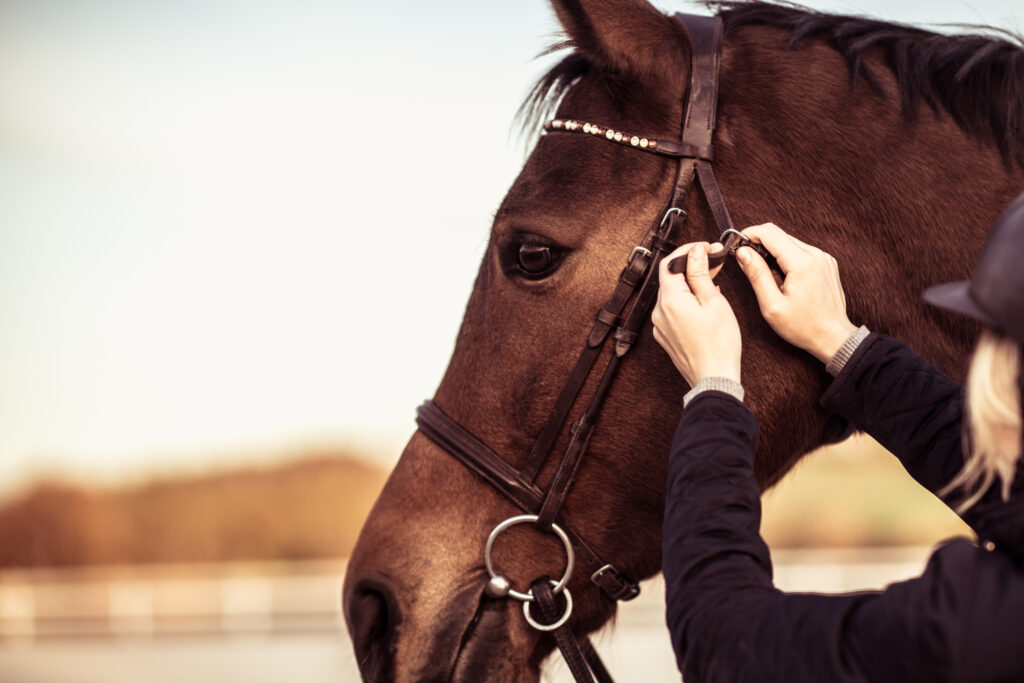Horse Tack Discomfort: 14 Ways to Combat It
Horse tack discomfort is a common issue in the equestrian world. It can affect both the horse’s well-being and the rider’s safety. Ill-fitting horse tack can cause visible sores, hair loss, and changes in behavior. These signs indicate that the horse is experiencing discomfort.
Proper saddle fit is crucial to prevent such issues. It requires knowledge of different saddle types and how they suit various horse body shapes. Regular maintenance of equestrian gear is also essential. It helps to prevent gear problems that can lead to discomfort.
Choosing the right tack, whether new or consignment, plays a significant role too. It’s about finding the right balance between cost, quality, and fit.
This article aims to provide tips and insights on preventing horse tack discomfort. It will guide you on how to select, fit, and maintain your horse tack for optimal comfort and performance.
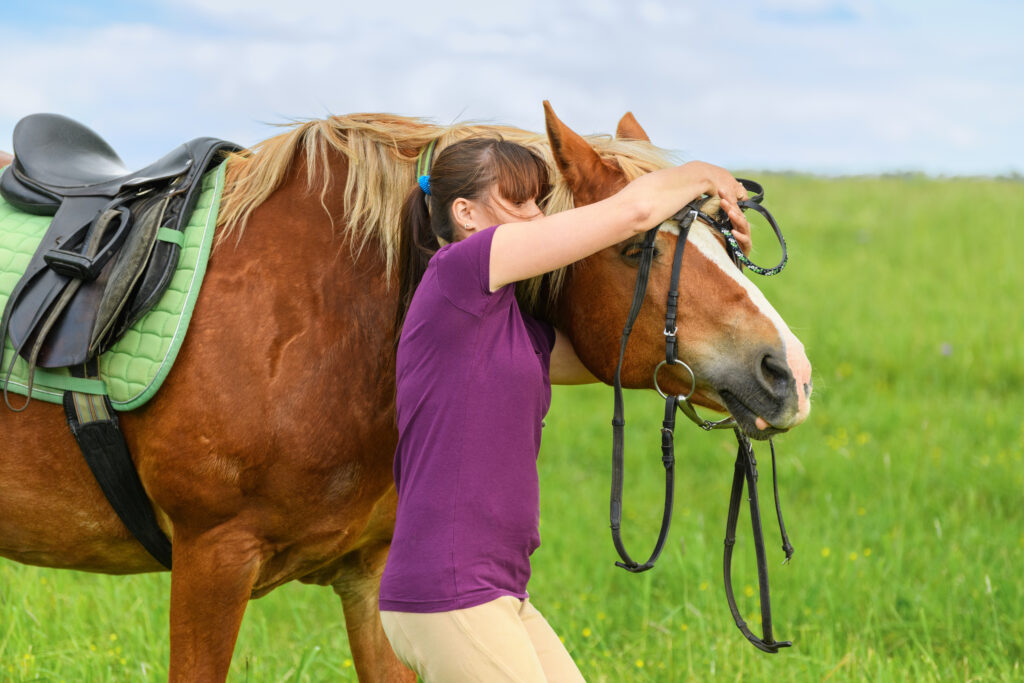
Recognizing Signs of Horse Tack Discomfort
Recognizing signs of horse tack discomfort is essential for any responsible horse owner. Early detection can prevent severe issues. Horses often display physical changes due to uncomfortable tack. These changes can be subtle at first but tend to worsen over time.
Behavioral changes are another critical indicator of horse tack discomfort. A horse in distress might act differently than usual. Addressing these signs promptly is vital.
Quick action can prevent more significant health problems. Understanding these signs helps maintain the horse’s health and improve its performance.
Visible Sores and Hair Loss
Visible sores and hair loss are common signs of discomfort. These often occur where the tack directly contacts the horse’s skin.
Pressure from ill-fitting tack can lead to skin irritation. Over time, this irritation can develop into sores or cause hair to fall out. Paying attention to these areas is vital. Regular grooming can help spot these horse tack discomfort problems early. If you notice these signs, reassess your tacks fit immediately. It’s crucial for your horse’s comfort.
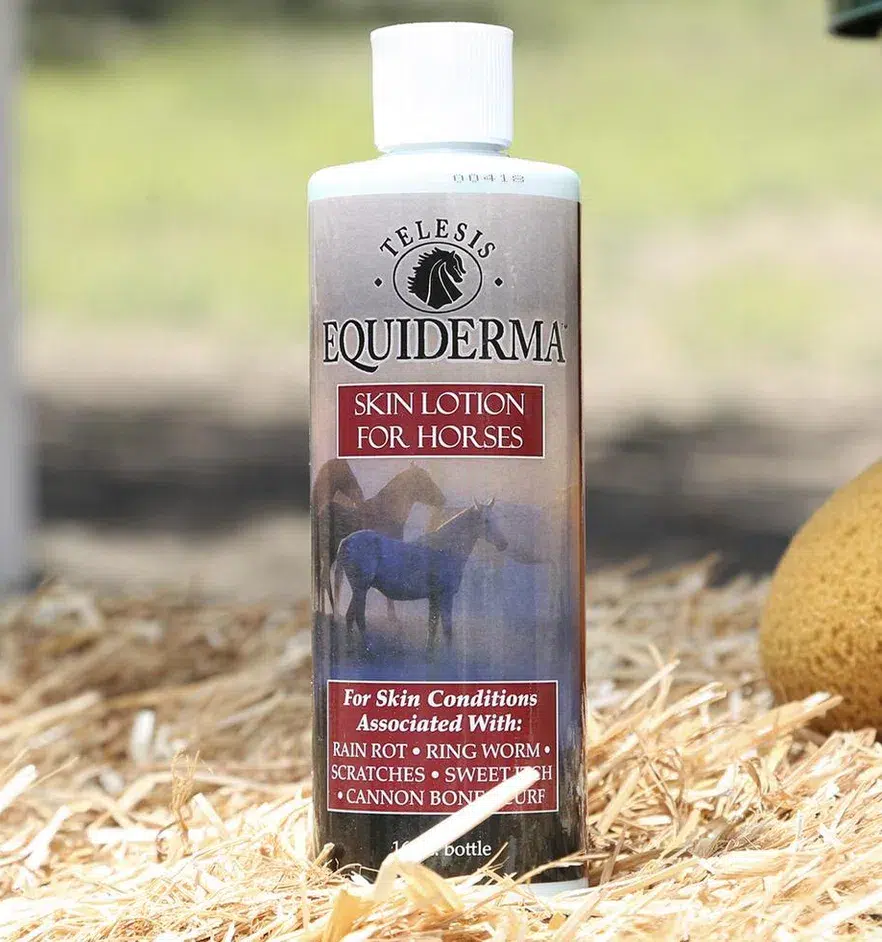
Behavioral Changes
Behavioral changes can signal discomfort as well. A horse in pain may become more irritable or restless. You might notice reluctance to move as eagerly. This could indicate that the tack is causing discomfort during movement.
Some horses may even show resistance when someone tacks them up. This behavior is a clear sign something is amiss.
Observing any changes in usual behavior is important and horse tack discomfort should be considered. Promptly investigating and adjusting tack can alleviate the issue.
The Importance of Proper Saddle Fit
Proper saddle fit is crucial for your horse’s comfort and performance. An ill-fitting saddle can cause significant stress. A well-fitted saddle evenly distributes the rider’s weight. This helps prevent pressure points on the horse’s back. Frequent checks of the saddle fit are advisable. Horses can change shape due to age or conditioning.
Improperly fitted saddles lead to physical and behavioral issues due to horse tack discomfort.
Identifying and resolving fit problems is key to avoiding horse tack discomfort. Invest time to understand saddle fit. It will enhance both horse and rider’s equestrian experience.
Measuring Your Horse for a Saddle
Measuring your horse for a saddle is a detailed process. Accurate measurements ensure that the saddle fits well.
Begin by assessing the horse’s back length and width. These dimensions help in selecting the right saddle size.
Next, consider the horse’s withers and shoulder shape.
Different body types require different saddle designs. Don’t forget to evaluate the horse’s muscle tone. A horse’s condition impacts the saddle’s fit significantly and can lead to horse tack discomfort if not accounted for.
Proper measurement leads to better saddle selection. It’s a proactive step to prevent horse tack discomfort.
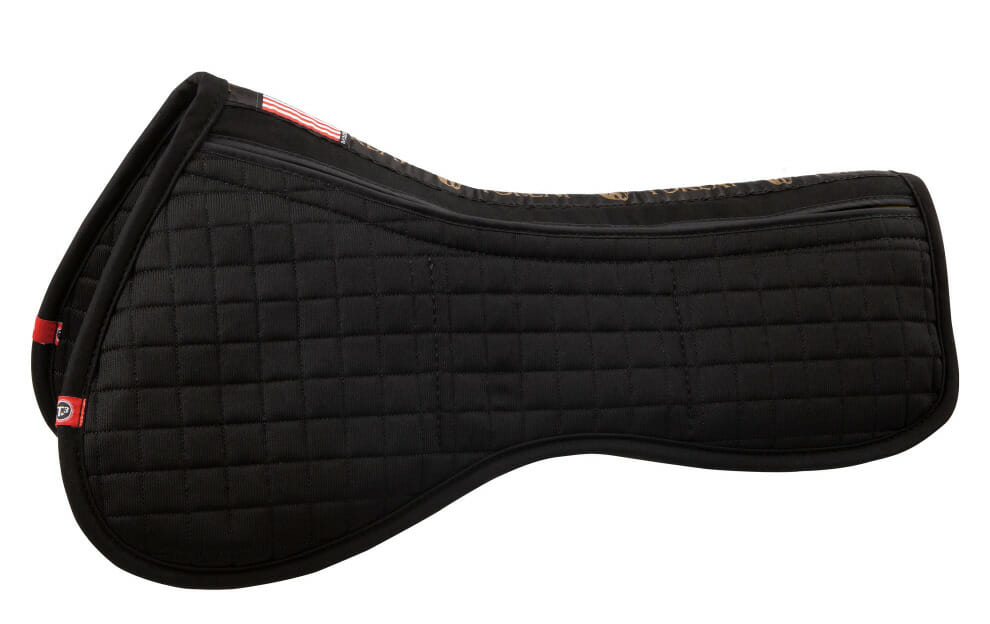
The Role of a Professional Saddle Fitter
A professional saddle fitter plays a critical role in tack comfort. Their expertise ensures the saddle fits perfectly.
They assess your horse’s unique body shape. With their experience, they can identify subtle issues. Fitting involves more than measurement. A professional considers the rider’s needs and riding style as well. Regular visits from a fitter are beneficial for eliminating horse tack discomfort. They can adjust the saddle as your horse’s shape changes.
Engage a professional if in doubt. Their insights can prevent many saddle-related problems and help you and your horse avoid horse tack discomfort.
Tack Maintenance and Care
Proper maintenance of tack extends its life and ensures comfort. Regular care prevents equestrian gear problems like wear or breakage.
Neglect can lead to ill-fitting gear and horse tack discomfort. Always inspect tack before use to avoid unexpected failures. Consistent care keeps leather gear soft and flexible. This reduces the risk of chafing or sores on you and your horse.
Check for fraying on fabric parts and rust on metal components. Address minor issues before they develop into larger problems. Maintenance includes cleaning, conditioning, and storing tack correctly. All these steps contribute to your horse’s comfort.
Regular Cleaning and Conditioning
Routine cleaning is essential for keeping tack in top condition. Dirt and sweat can accumulate, leading to deterioration.
Leather tack requires cleaning and conditioning to remain supple. Conditioning helps prevent cracking and maintains its comfort for the horse. Use appropriate cleaning products for different materials. Harsh chemicals can damage tack, leading to discomfort or failure. Use cleaners and conditioners specifically designed for the materials you are maintaining.
Make cleaning and conditioning a regular practice. It’s an investment in safety and and minimizes horse tack discomfort.
Storing Tack Properly
Proper storage prevents tack from developing mold or warping. These issues can lead to horse tack discomfort. Keep tack in a dry and well-ventilated space. Moisture can ruin leather, making it stiff and uncomfortable.
Use tack racks or hooks to maintain the shape of saddles and bridles. This helps prevent deformities. Cover tack with breathable materials to shield it from dust. Proper storage ensures your tack is ready for each ride.
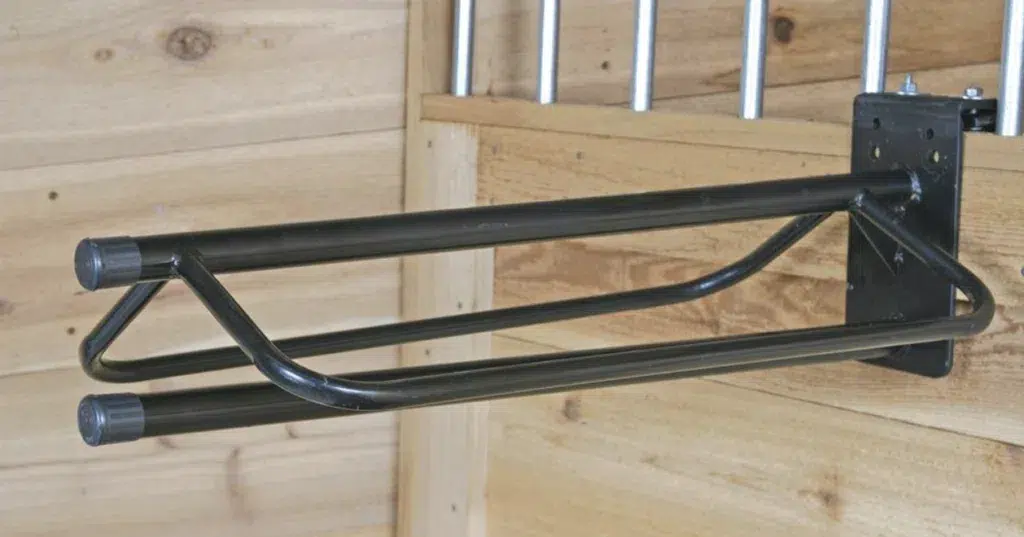
Choosing the Right Tack
Selecting the correct tack is vital for your horse’s comfort. Incorrect choices can lead to significant equestrian gear problems. Always consider your horse’s build and workload. These factors influence what type of tack will fit best.
Avoid compromises that can lead to issues. Prioritize quality and fit over convenience or price. Consider the horse’s discipline and riding style. Different activities may require different tack setups.
Choosing the right gear is a proactive step. It helps to prevent horse tack discomfort from the very start.
New vs. Consignment Horse Tack
New tack offers the latest materials and designs. However, it can be expensive and not always immediately comfortable. Consignment horse tack can provide tried and tested options. It’s often more affordable but inspect thoroughly for wear. Used tack may need repairs or adjustment. Look for signs of stretching or cracking before buying.
Buying consignment allows more flexibility in trying different styles. A trial period ensures it meets your horse’s needs. Both new and consignment options have merits. Evaluate your priorities and budget.
Custom-Made Tack for Better Fit
Consider custom-made tack for a tailored fit. It addresses unique body shapes and comfort needs.
This approach often resolves issues that standard sizes can’t. Custom gear aligns with the horse’s specific anatomy.
Work with professionals to ensure precise measurements. Their expertise ensures a better fit and reduced discomfort.
Though custom-made is costlier, the benefits often outweigh initial expenses. It’s a long-term investment in your horse’s well-being. Don’t overlook the option for custom solutions. They can transform the riding experience for you and your horse.
Adjusting Tack for Horse Comfort
Proper adjustments are crucial for preventing horse tack discomfort. Regularly check all components to ensure a perfect fit.
Adjustments should account for the horse’s changing body. As horses grow or train, their tack needs can shift.
Ill-fitting horse tack can easily cause sores or irritation. Take the time to make gradual, necessary changes.
Even well-fitted tack requires periodic fine-tuning. Be mindful of any shifts in your horse’s behavior. Listening to your horse is key. Their responses indicate whether they need further adjustments.
Bridle and Girth Adjustments
The bridle should fit snugly without pinching. Adjust the straps to avoid discomfort around the ears and mouth.
A well-fitted girth is equally important. It should be tight enough to hold the saddle but not so tight that it causes sores.
Check for rubbing marks, a sign of improper fit. Address these issues quickly to prevent long-term discomfort. Regularly reassess the fit as the horse changes. A few adjustments can make a big difference in comfort.
Padding and Pressure Distribution
Effective padding can help alleviate pressure points. Choose a saddle pad that distributes weight evenly across your horse’s back.
Opt for materials that breathe and prevent heat buildup. This reduces the risk of sweating and chafing. Monitor your horse after each ride. Look for signs of uneven pressure or sore spots. Padding should complement the saddle, not compensate for poor fit.
Balance is essential in ensuring comfort.
A Holistic Approach to Tack Comfort
Ensuring a horse’s comfort requires a thoughtful approach. You must tailor each component of the tack to the horse’s needs. Regular checkups help identify potential problems early. Stay attentive to the horse’s feedback to make timely adjustments. Ultimately, a comfortable horse performs better and is happier. Make tack fit and maintenance a priority. A quick recap:
- Recognizing Signs of Discomfort – Look for physical and behavioral changes.
- Visible Sores and Hair Loss – Check for irritation where tack contacts the skin.
- Behavioral Changes – Watch for irritability, restlessness, or reluctance to move.
- Proper Saddle Fit – Ensure even weight distribution and check fit regularly.
- Measuring for a Saddle – Assess back length, width, withers, and muscle tone.
- Professional Saddle Fitter – Consult experts for a precise fit.
- Tack Maintenance and Care – Regular inspection prevents discomfort.
- Cleaning and Conditioning – Maintain leather tack to avoid cracking.
- Storing Tack Properly – Prevent mold and warping with dry, ventilated storage.
- Choosing the Right Tack – Prioritize fit over price and convenience.
- New vs. Consignment Tack – Weigh the benefits and inspect used gear.
- Custom-Made Tack – Consider tailored options for better comfort.
- Bridle and Girth Adjustments – Ensure snug, non-pinching fit.
- Padding and Pressure Distribution – Use proper padding to prevent pressure points.
These tips collectively emphasize the importance of selecting, fitting, maintaining, and adjusting horse tack for optimal comfort and performance.
